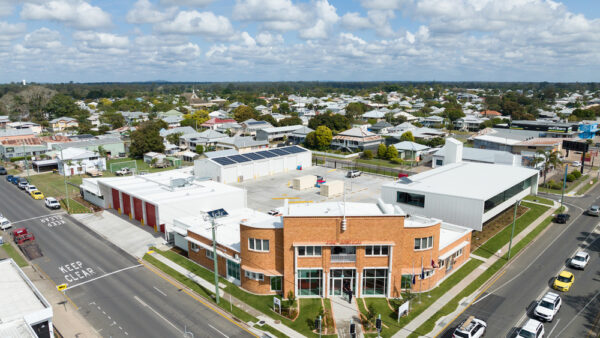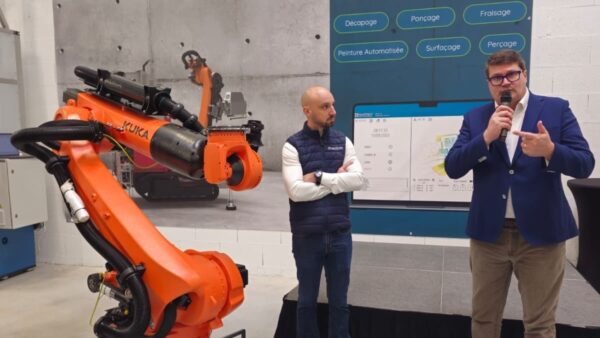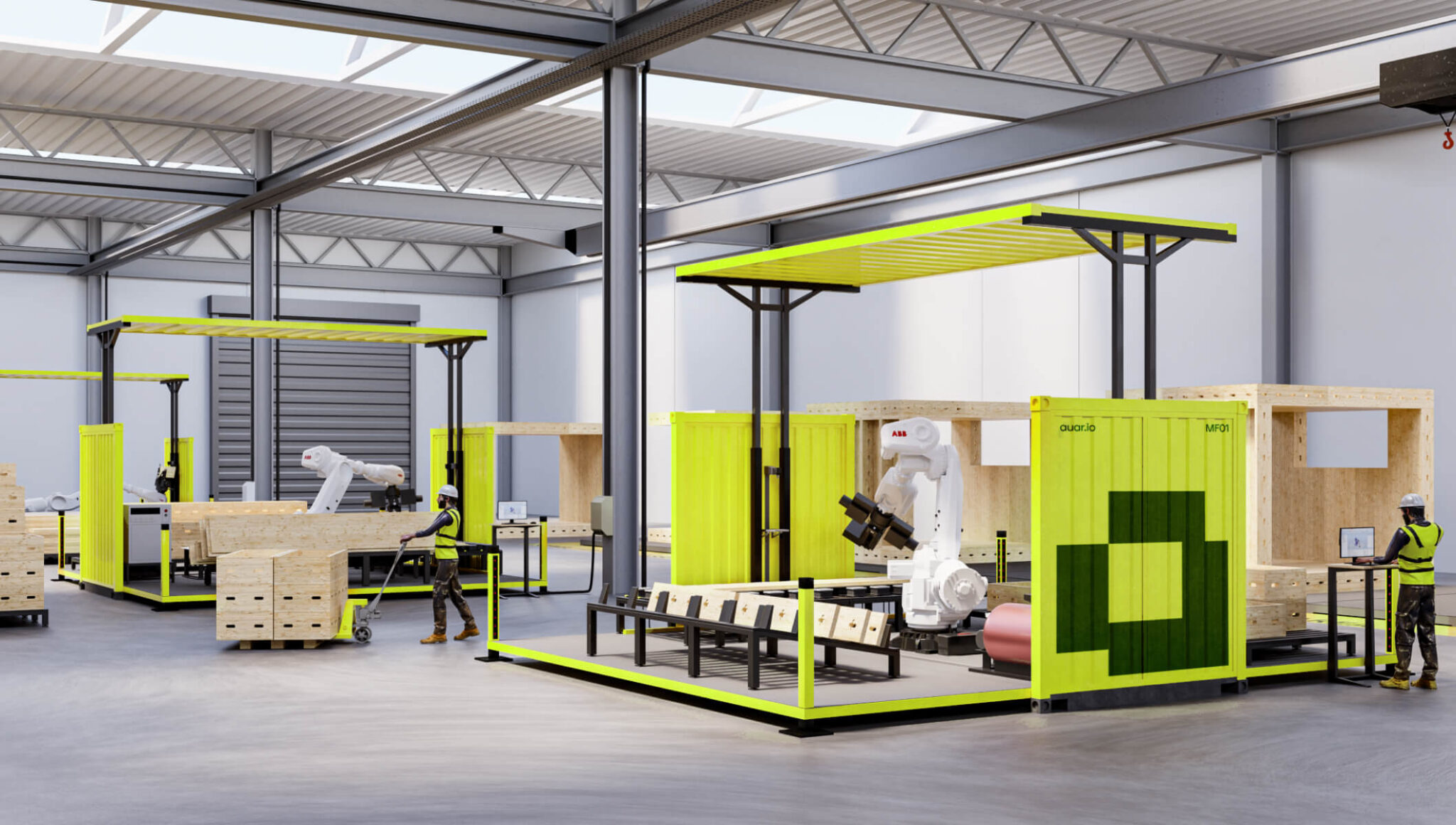
UK construction tech startup Automated Architecture (AUAR) is shipping two of its robotic “pop-up micro-factories” to the US in its first foray into automated housebuilding in North America.
Packed into one shipping container, each micro-factory contains a robotic arm equipped with machine vision and AI capabilities.
The arm can select and cut standard timber elements and assemble them into frame panels for the walls, ceilings and floors of a house.
The factory can be set up in a tent on site, or in a nearby industrial building, with panels delivered to the site.
For the robotic arm, AUAR teamed up with the robotics division of the Swiss-Swedish electronics manufacturing multinational ABB to try and develop what they call a “global, automated construction ecosystem for housing”.
Customer and investor
Taking shipment of the two micro-factories is Fort Wayne, Indiana-headquartered Rival Holdings, a firm founded last year that invests in new construction technologies.
It invested an undisclosed amount in AUAR in March this year.
It said it would use the micro-factories to build “thousands of sustainable and affordable homes across the Midwest”.
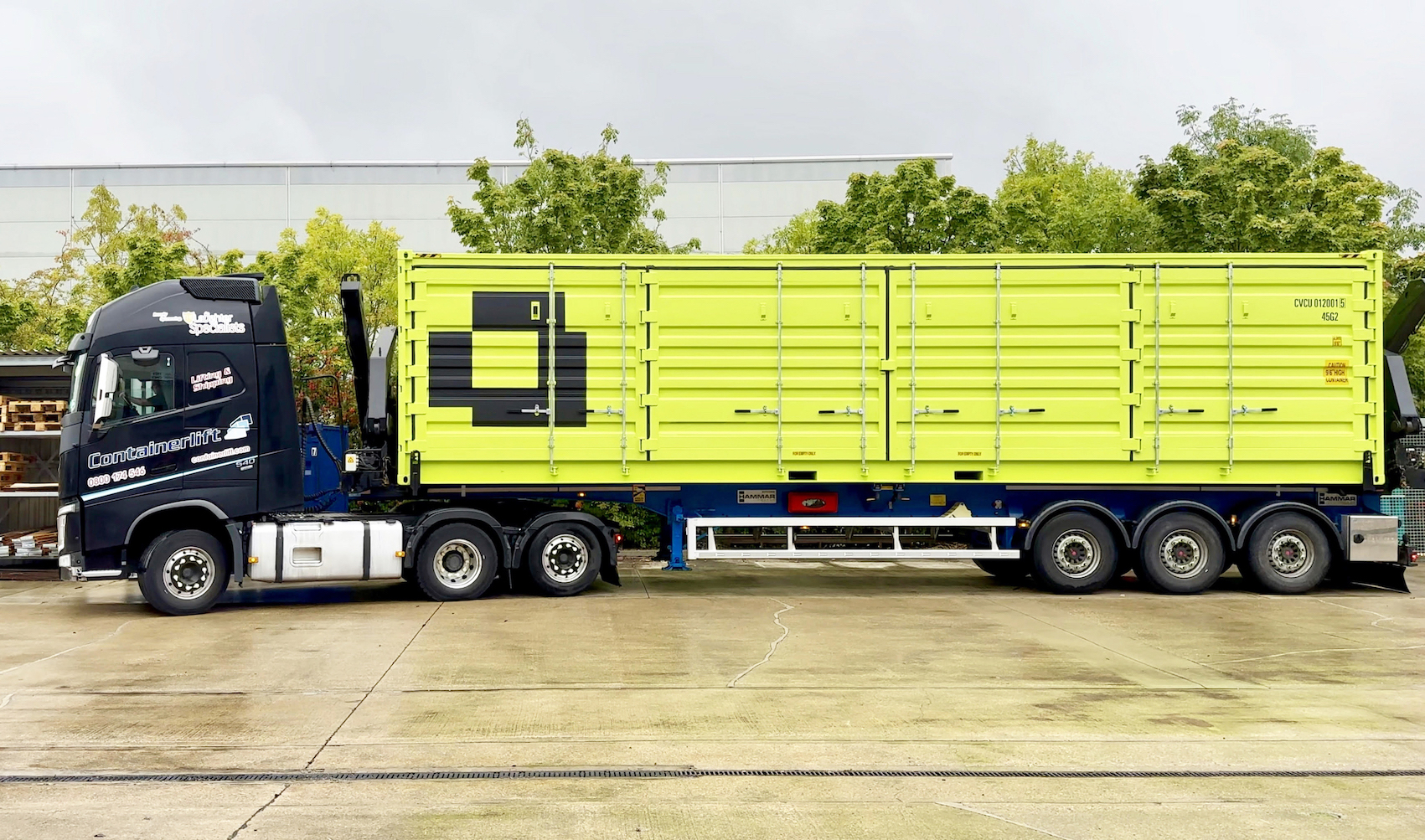
The two micro-factories it’s getting can each produce up to 180 homes a year, AUAR said.
Unlike other failed automated modular construction attempts like Katerra, AUAR is trying a “hardware-as-a-service” model that allows its licensees to avoid heavy, upfront capital spending on manufacturing capacity.
“We are investing in these first micro-factories because we see the potential to reduce cost, reduce time on-site, and improve quality, all in a way that makes life better for homeowners,” said Jerod Hevel, VP of innovation and strategy at Rival Holdings.
How they work
AUAR co-founder Mollie Claypool described how the micro-factories work in a note to GCR.
“Each micro-factory container has 1 ABB robot arm and additional proprietary hardware developed by AUAR for the robot such as its end effector, automated saw and assembly table.
“The robot arm starts by scanning piles of sheet material and timber lengths to gain insights on the positioning of materials within the container.
“The robot then starts cutting standard timber lengths into precise components. This is done using AUAR’s automated saw within the container that ensures accuracy and minimises waste.
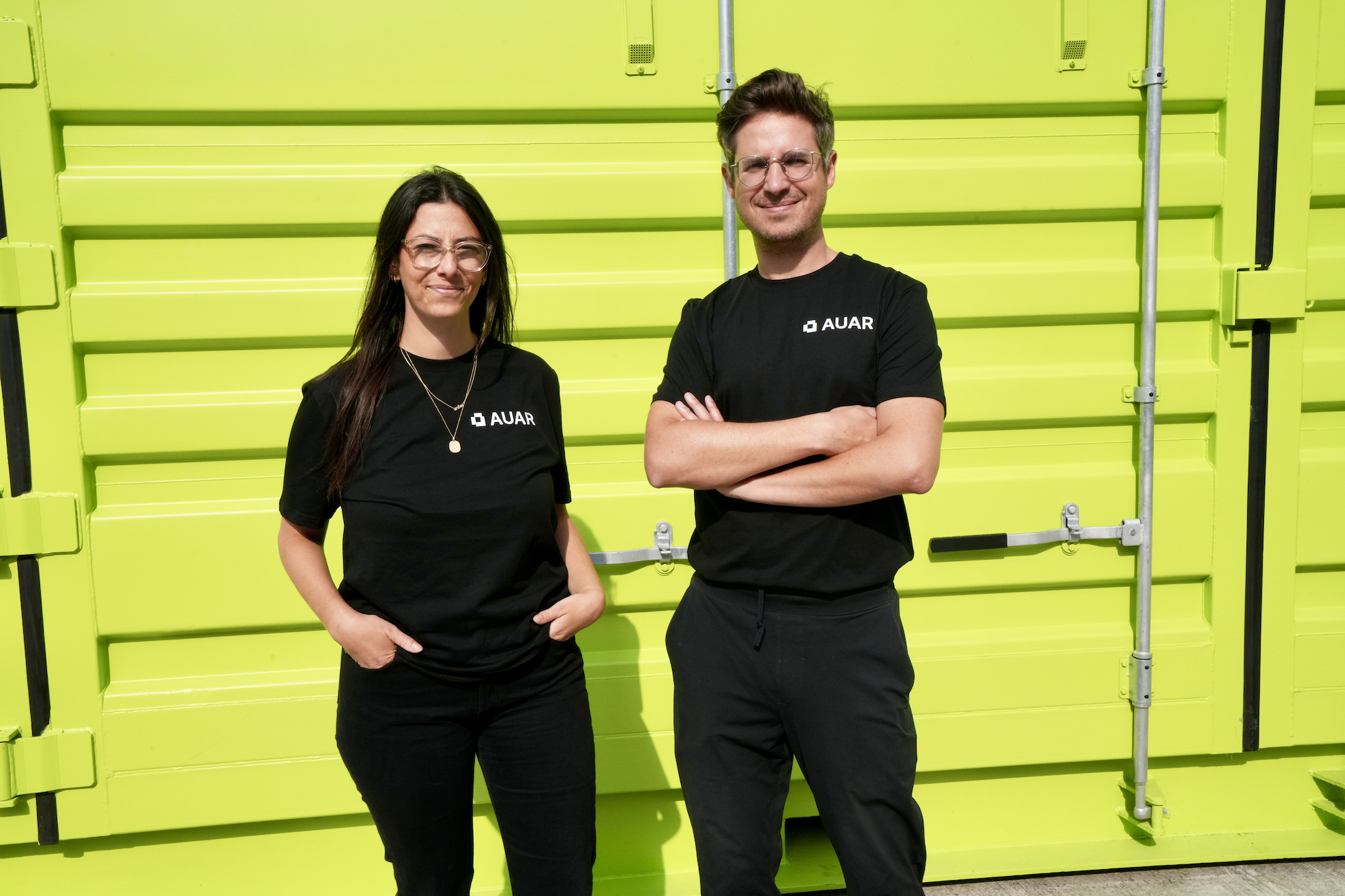
“Once the timber lengths are cut, the robots assemble the timber lengths and standard timber sheets into timber frame panels. This highly automated process includes tasks such as nailing and lifting, all handled by the robots.”
Hard-working software
She added: “AUAR’s software platform is comprised of design-for-manufacture and assembly micro-services that AUAR and their partners use to automate the collection of design requirements, building code and supply chain information, and automatically produce full design specifications including construction details, bills of materials, the manufacturing code for the Micro-Factories and installation sequencing instructions.”
Trades are needed to install MEP and finishings on site, Claypool said.
As they’re currently configured, the micro-factories produce frame panels only.
Claypool said they can be adapted “to produce closed timber frame panels that have insulation, timber external facade panels and vapour barrier pre-installed prior to arriving on site”.
- Subscribe here to get stories about construction around the world in your inbox three times a week
Further reading:



